Citizen Conservationists
In Minnesota’s prairie pothole country, a dedicated group of waterfowl hunters is bringing back long-lost wetlands
In Minnesota’s prairie pothole country, a dedicated group of waterfowl hunters is bringing back long-lost wetlands
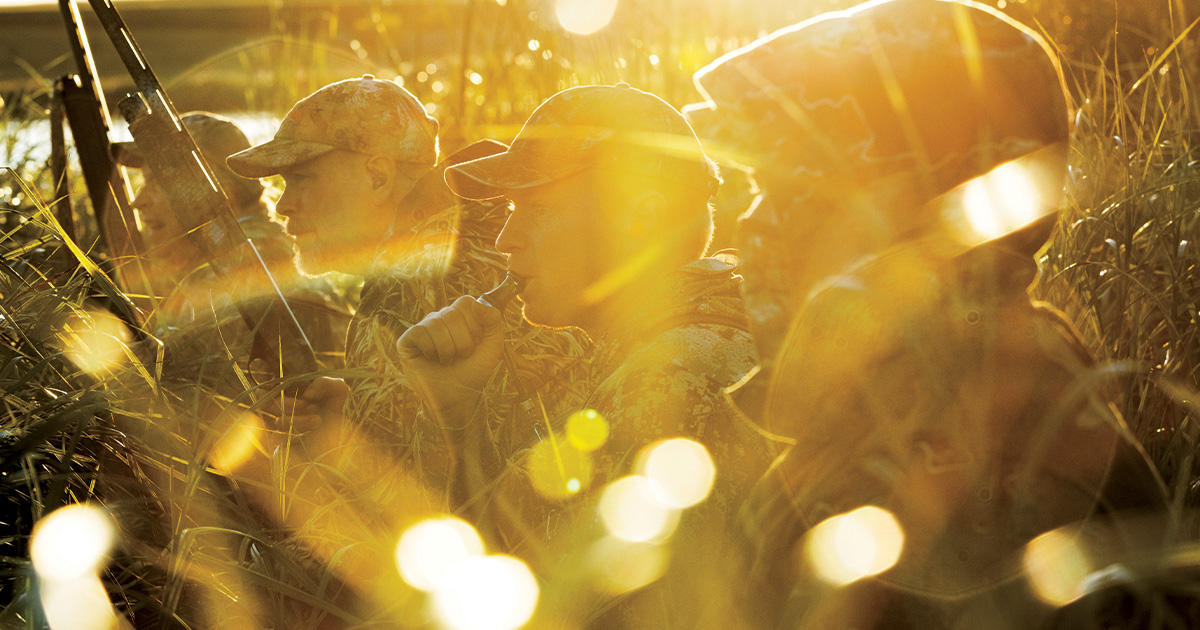
On a perfect fall afternoon, Tim Eisenmenger and I are standing on a windy hilltop somewhere on the rolling prairies of southwest Minnesota. It’s opening day of the 2022 waterfowl season, and we’re still a little giddy about the full straps of ducks we collected just a few hours earlier.
Tim points out the wetland occupying a basin at the bottom of the hill. “That’s called Round Lake,” he says. “My brother and I hunted there a lot as kids, because it was the only place there was to hunt around here.”
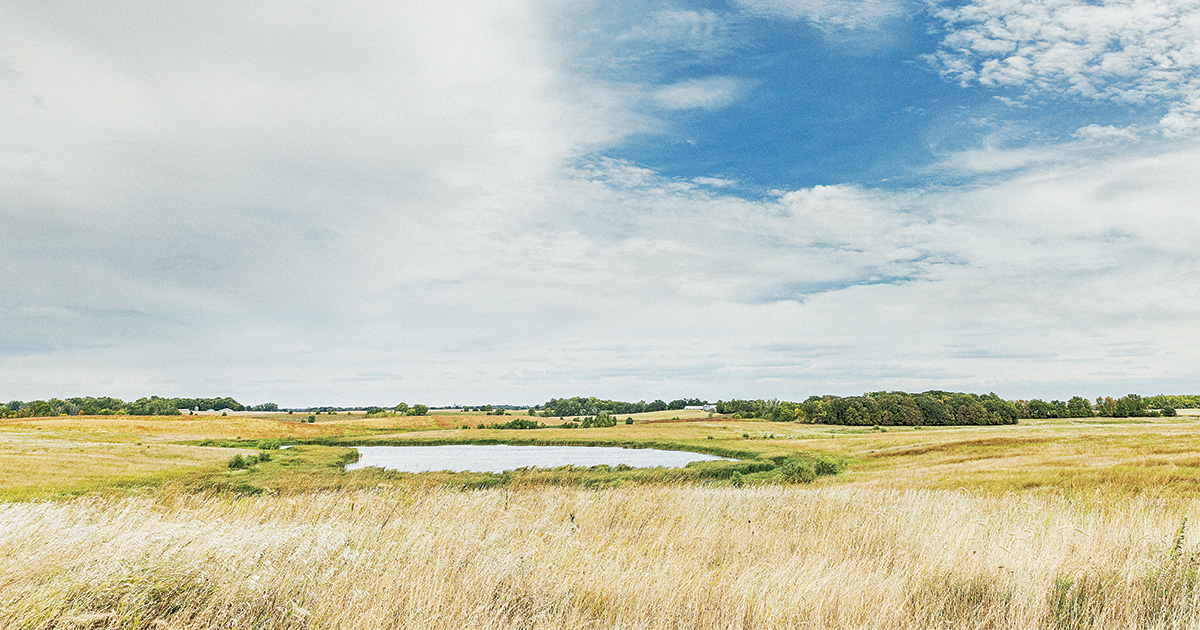
His statement surprises me. That’s because, since we packed up our hunting gear and cased our shotguns and tended to our birds, we’ve been driving all over Martin County looking at an abundance of beautiful, healthy wetlands, many of which are open to the public. In fact, this sparsely populated county is a great place to be a public-land hunter, with 20 wildlife management areas covering around 5,000 acres at one’s disposal.
But that hasn’t always been the case. Much, if not most, of the wildlife habitat and the public access we’ve been touring has been created or restored during Tim’s lifetime. It’s a significant conservation accomplishment, made possible by a number of partners working together with a common mission. And at the core of it all is a small group of duck hunters with an extraordinary drive to bring back natural areas that have been lost.
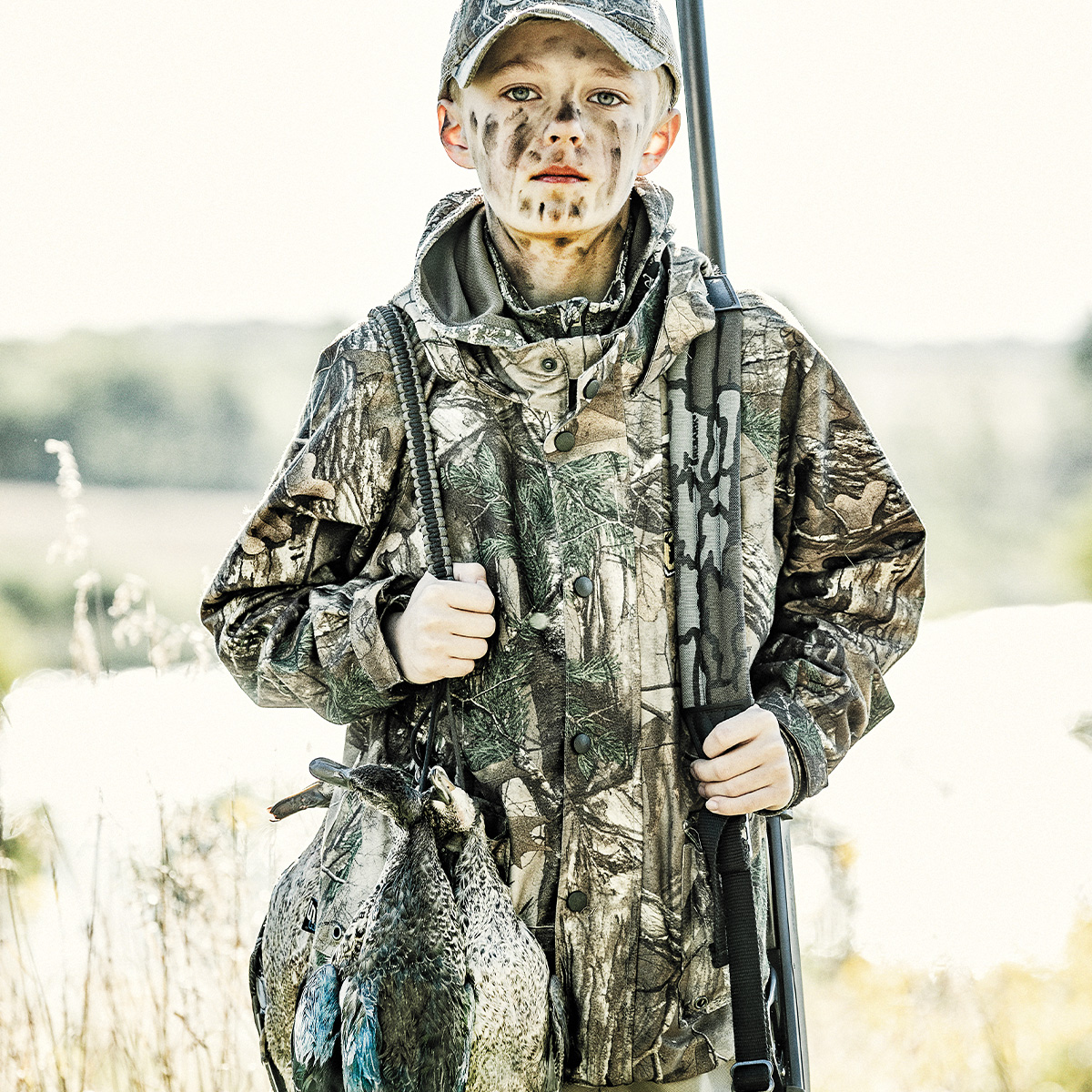
Gavin Eisenmenger represents the youngest generation in a family that has established deep roots on the prairies of Minnesota and a deep commitment to conserving and protecting the state’s natural areas.
Tim grew up hunting with his brother and father. In high school, his social studies teacher taught him a basic concept that has been the foundation of conservation in North America for nearly a century: Those of us who enjoy the outdoors have a responsibility to care for and protect our natural resources.
An enthusiastic young outdoorsman and budding conservationist, Tim learned that less than one percent of the original wetlands in Martin County still existed. Though the area had once been a crucial part of North America’s Prairie Pothole Region, also known as the “Duck Factory,” many of its wetlands had been drained, and most of its prairie grasslands had been plowed under.
“We had lost almost everything,” says DU Biologist John Lindstrom. “In some parts of Minnesota we have lost 99 percent of our grasslands and 90 percent of our wetlands, and many of the wetlands that remain aren’t healthy.” He says the soils in this area are very productive, which is why so much of the land here was converted to agriculture. But he notes that those soils can also be productive for wetland habitat.
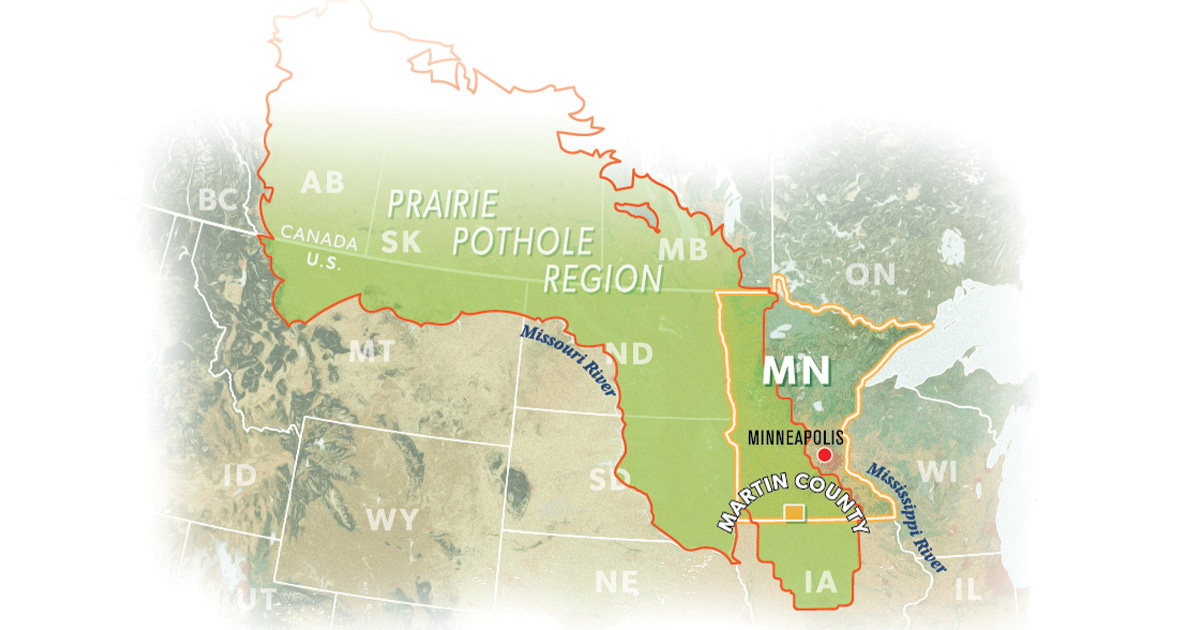
In 1981, fresh out of high school, Tim joined the Fox Lake Conservation League (FLCL), a local group formed in 1950 with a mission to “Promote conservation of natural resources of the state of Minnesota and more particularly to fish, game and other wildlife.” Today, Tim is president of the organization, which, though it’s still just focused on one county, has grown into a major conservation player in Minnesota. Working with a variety of partners, FLCL is responsible for an impressive assortment of positive changes on the landscape. Lindstrom says the group has raised tens of millions of dollars to conserve thousands of acres in Martin County.
Opening day in Minnesota is not unlike opening day just about anywhere. You fumble through your blind bag looking for duck calls and earplugs and hats and gloves that you haven’t used since last season. The weather is relatively mild, but there’s enough of a snap in the air to get your attention. Well before dawn, Tim and I met up with a large group of hunters at the home of Josh Eisenmenger, Tim’s son.
Most of the two dozen or so hunters were in family groups. Outside in the darkness, moms and dads scrambled to organize decoys and hand out snacks and boxes of ammo. Children wriggled into new waders and loaded fresh batteries into their headlamps. Several retrievers milled about—others whined with excitement in their kennels. Eventually, details were finalized, trucks were loaded, and the various groups fanned out across the landscape in search of the first ducks of the season.
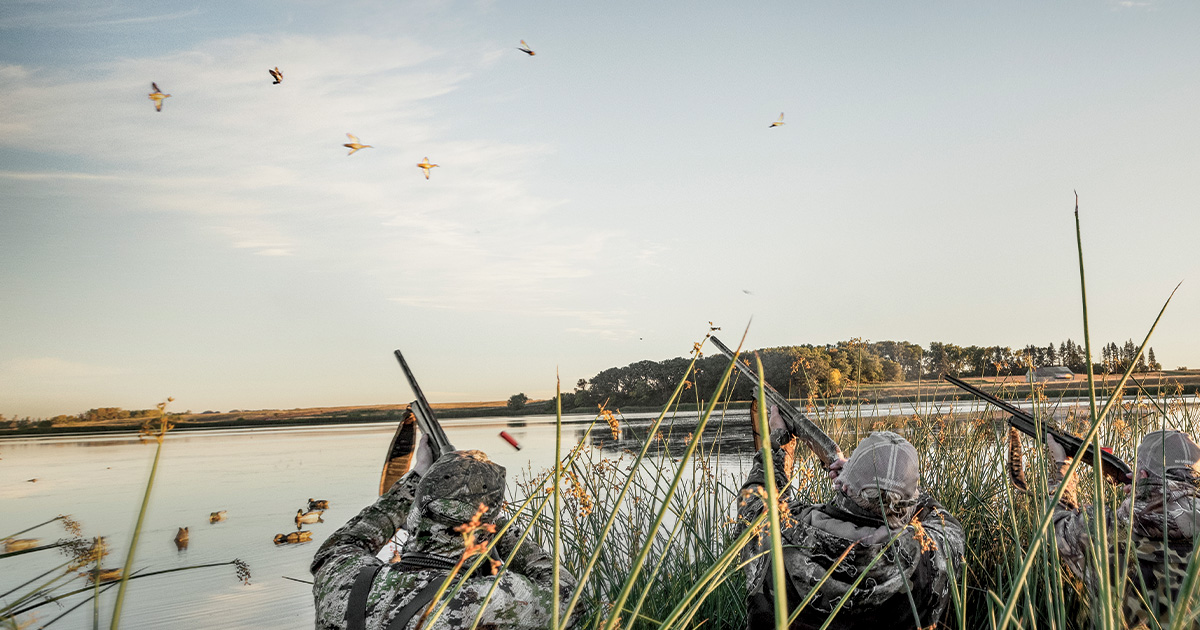
Hunters huddle in marsh grass on the edge of a restored wetland while flocks of ducks, on the cusp of their fall migration, buzz the decoys.
Tim and I were the last to leave, eventually situating ourselves at the edge of a large wetland, where we joined Josh and Tim’s wife, Chris. As Josh set the decoys, we set up marsh seats and huddled in the brush. I love this kind of minimalist hunting—no fancy blind or massive decoy spread, just a few friends tucked into the reeds and a couple dozen decoys bobbing on the water in front of us. Spinning-wing decoys? Layout blinds? Fancy camo? It’s opening day on the prairies of Minnesota. You don’t need them.
It was just before shooting light when the teal show began. Multiple groups of bluewings buzzed the water’s surface, twisting, diving, and ascending in unison. I could see them as they rose, silhouetted against the brightening sky, but I lost them whenever they dropped closer to the water, where they would disappear in front of the still-dark trees ringing the wetland.
I was keeping my head down, trying to stay out of sight, so it was a surprise when Josh said “Take ’em.” I stood up to peek over the marsh grass and there they were—at least a dozen bluewings flaring over the decoys. The Eisenmengers were already shooting as I raised my gun, found a bird, clicked off the safety, and then watched the bird fall before I could pull the trigger. I struggled to find another duck, but the flock was already in hasty retreat halfway across the wetland. No worries. I just needed to knock off the opening day rust, get back in the game, and be ready the next time.
And there were lots of next times. The bluewings kept flying most of the morning, along with a few gadwalls and mallards. By late morning, our game straps were heavy with birds and daylight had revealed the scene before us. We were sitting on the edge of one of the prettiest wetlands you’ll ever see, nestled in a prairie landscape rich with wild creatures. Tim talked about the abundance of wildlife they see on this property and about the conservation work here, which was overseen by FLCL and its partners. The original wetland had been drained, but the resulting farmland was only marginally productive. Restoration work included removing drain tiles and letting the property revert to its original state, which today supports breeding and migrating waterfowl and a variety of other wildlife species.
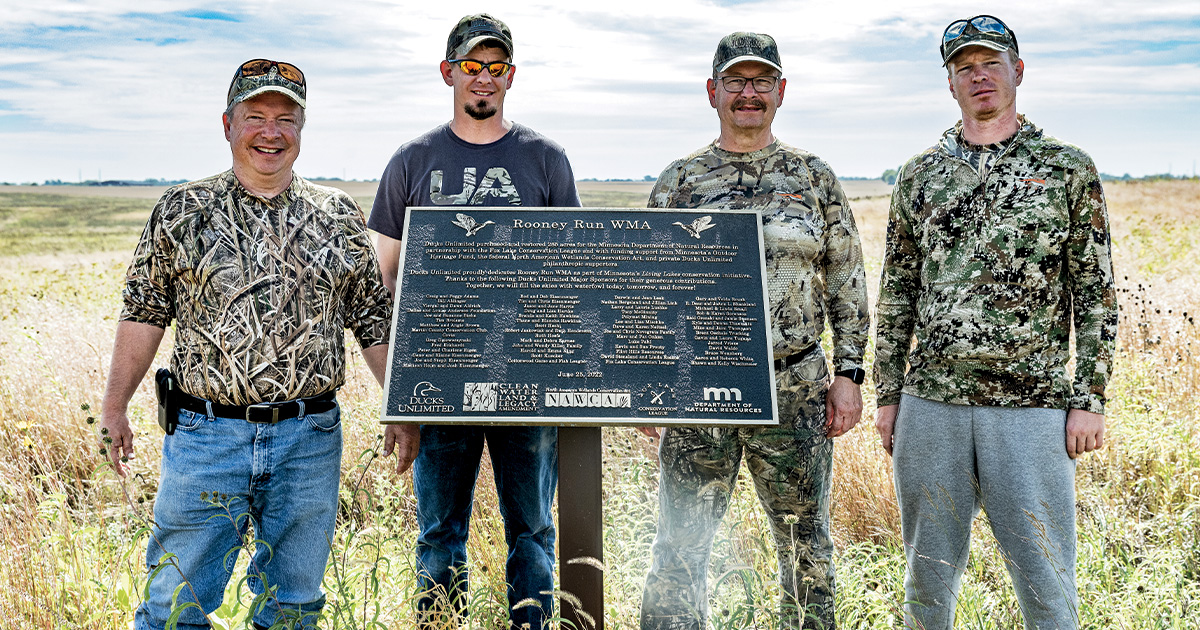
(From left) Tim, Joe, Rod, and Josh Eisenmenger are active members of the Fox Lake Conservation League, a group focused on improving wildlife habitat and hunting opportunities in Martin County.
It’s the same story across Martin County, where many tracts of marginally productive farmland have been lovingly restored to productive wildlife habitat. Some of that land is private, but much of it is under state ownership and open to the public for recreation.
“It’s pretty cool to see what we’ve accomplished,” said Doug Hartke, an FLCL board member. Doug joined us for a second morning of hunting in this unique part of the state, along with his young retriever, Rudy. Compared to the barrage of opening morning, the pace of the hunting had slowed somewhat, but we all got some shooting in, and the highlight was watching Rudy retrieve his first duck. Tentative at first, but gently encouraged by Doug and Josh, the young Lab eventually got the hang of it and made several fine retrieves over the course of the morning.
Like Tim, Doug got involved with FLCL at a young age and has now been working on conservation projects in this part of the state for nearly 40 years. A self-described “city kid” when he was growing up, Doug started hunting with Tim and Tim’s family in high school. “I fell in love with hunting, but I fell more in love with the conservation part of it,” Doug said.
Today, he is the organization’s grant coordinator. Reflecting on all the projects that the group has completed over the years, he noted, “It’s pretty cool to see what we’ve accomplished. In fact, it’s mind-boggling what we’ve been able to do.”
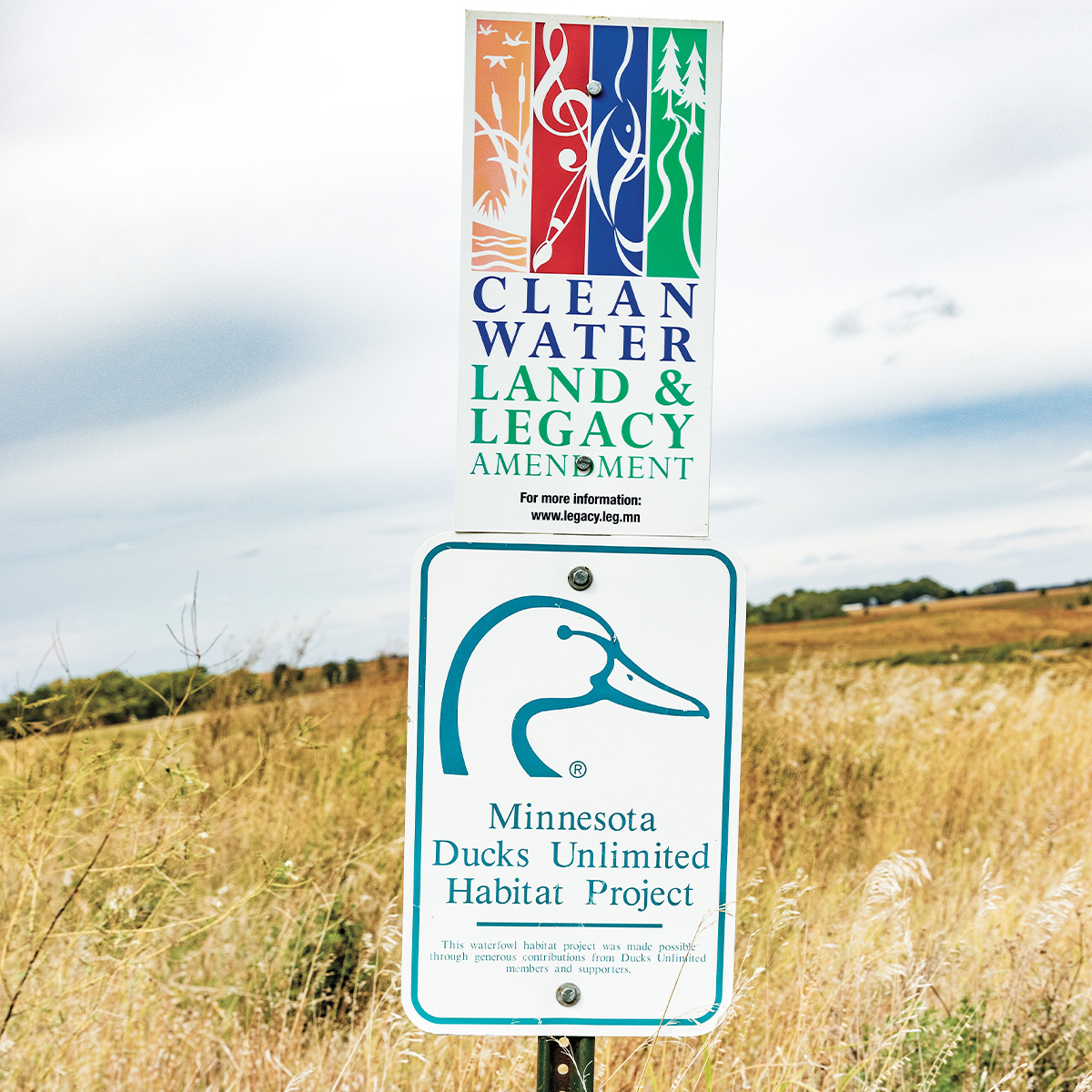
It’s hard to think of a finer time and place to talk about the benefits of conservation than while sitting in the reeds at dawn as ducks are evaluating your decoys. “There’s nothing better than watching a slough wake up and the birds and the sunrise,” Doug said. “You enjoy it and you get to see it, but there’s so much more now that we need to do. There’s so much more money to be raised and projects to be done.” He emphasized that finding and working with like-minded partners is key to the group’s success. “The partnership effort is where it’s at. If we’re going to do something, we’re going to go get a partner who’s going to take it on. Working together, we’re going to get more done.”
The Fox Lake Conservation League partners regularly with DU, the Minnesota Department of Natural Resources, The Conservation Fund, Pheasants Forever, and others. In 2022, DU presented FLCL with its Partners in Conservation Award, recognizing the group’s decades-long contributions to conservation and waterfowl hunting in this unique area. “With their dedication, we’ve been able to conserve thousands of acres of wetlands and uplands,” Lindstrom says. “By putting back some of this habitat, we’re seeing the birds show back up. And moving forward, everything we’re doing is impacting waterfowl distribution and other benefits to the ecosystem.”
Tim and I continue our tour of restored wildlife habitat, and he recounts many of the details of individual projects and the effort required to bring them to completion. I’m struck by the amount of work it takes—raising funds, forming coalitions of partners, engendering goodwill among landowners and the public at large, and lobbying politicians, not to mention moving dirt and planting seeds. And I begin to wonder what drives people like Tim and Doug to dedicate so much of their time and effort to conservation. Like most of us, they have busy lives filled with career and family responsibilities. Yet, for four decades, these citizen conservationists have been leading nothing less than a conservation revolution in this county.
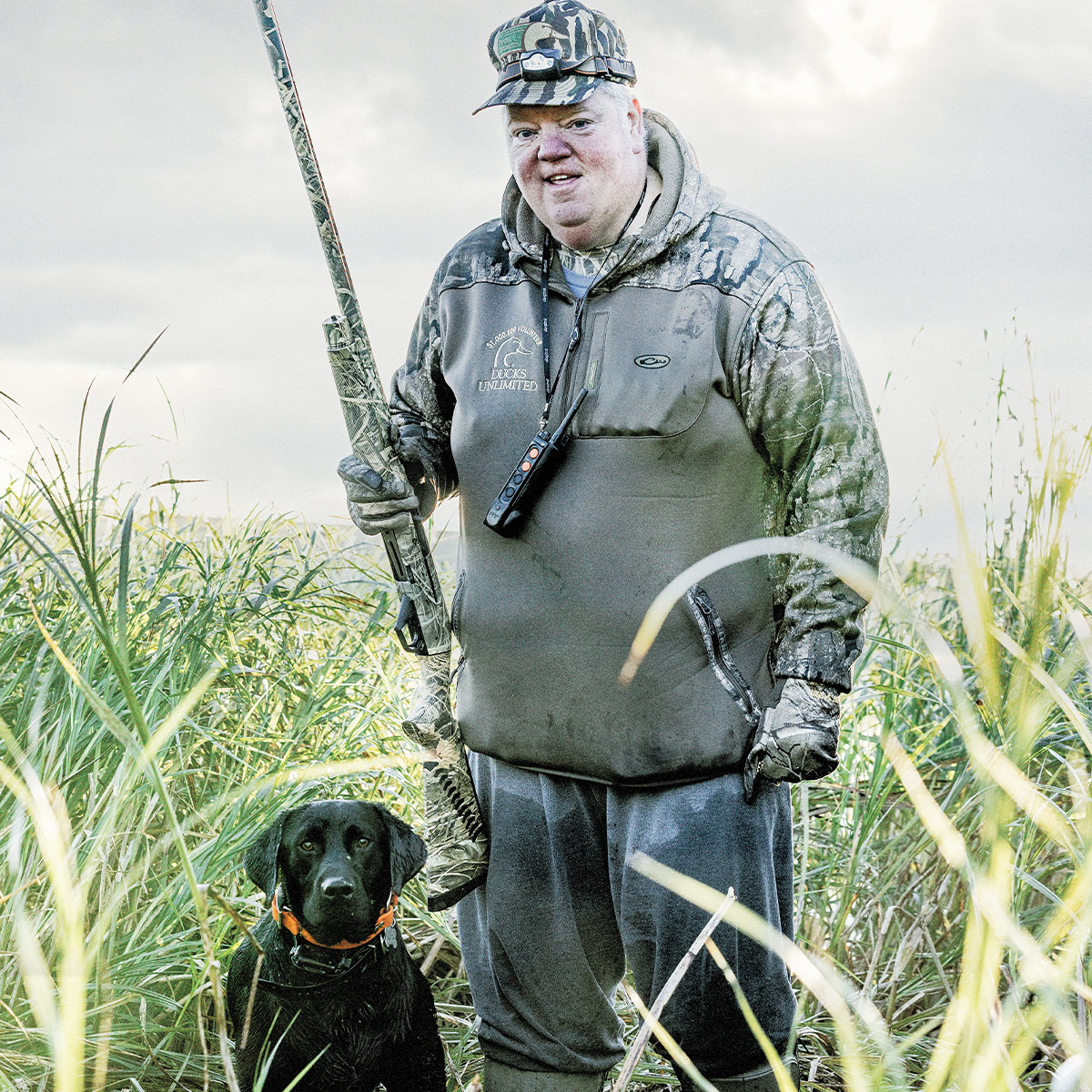
Doug Hartke, a Fox Lake Conservation League board member, and his young Lab, Rudy.
“They are very unique people. They might be once-in-a-generation people,” says Emilee Nelson, Minnesota associate state director for The Conservation Fund, a national nonprofit established in 1985 to create solutions that make environmental and economic sense. Her organization has partnered with FLCL on numerous projects over the years, mostly targeting farmland that can be restored back to wildlife habitat. She is especially interested in acreage where a landowner can benefit from selling marginally productive farmland and investing in more productive land elsewhere. “We want people in rural places to succeed,” she says. “The more benefits you can tie to a conservation project, the more sustainable it becomes.
“People like Doug and Tim see a century into the future,” Nelson continues. “They see opportunities for land protection and they make it happen. They do a great job communicating what they are trying to do, and they are able to rally people and do great things for duck habitat. They have roots here. They have a very big love for the place they are in. And they are committed to being there long-term. That’s what it takes.”
DU’s Lindstrom has overseen much of the restoration work on projects coordinated by FLCL. “Doug and Tim have lived in Martin County their whole lives,” he says. “They’ve seen the loss of habitat. They’ve seen the decline in birds. They know what it used to be like. That burning desire is the same thing that drives all of us. It comes from the memories that define us as people. They can help provide that to the next person.”
There’s a cairn at Round Lake, recognizing many of the people and organizations involved in the restoration project, including Tim, Doug, and other FLCL members. That recognition is well deserved, but as I shake hands, say my good-byes, and drive out of Martin County, I can’t help but think that the more appropriate recognition is seen in the marks these people have made on this unique landscape, including the many acres of wetlands and uplands where hens have the habitat they need to raise broods of ducklings and where friends can gather on a cool fall morning to watch a wetland come to life.
Ducks Unlimited uses cookies to enhance your browsing experience, optimize site functionality, analyze traffic, and deliver personalized advertising through third parties. By continuing to use this site, you agree to our use of cookies. View Privacy Policy